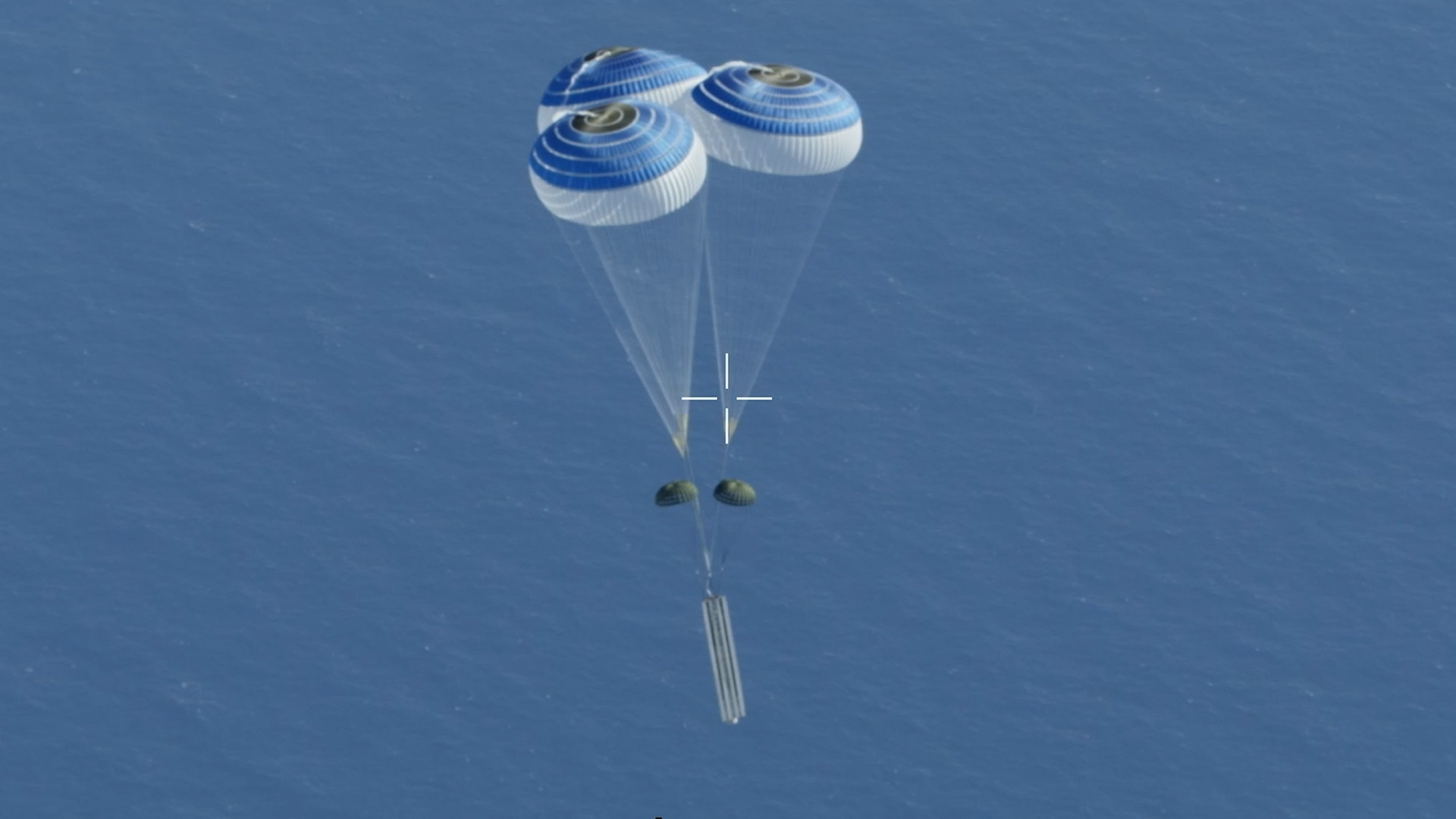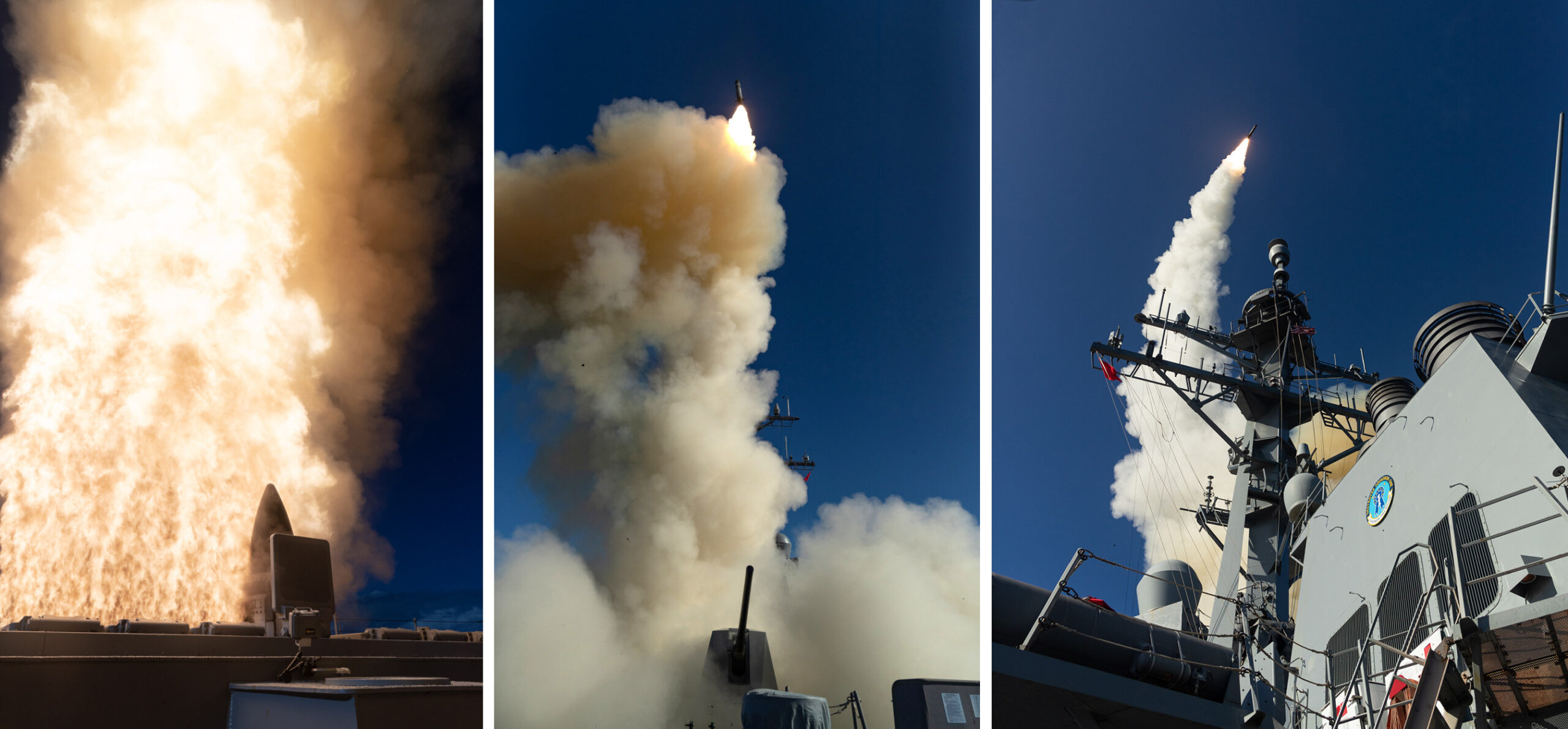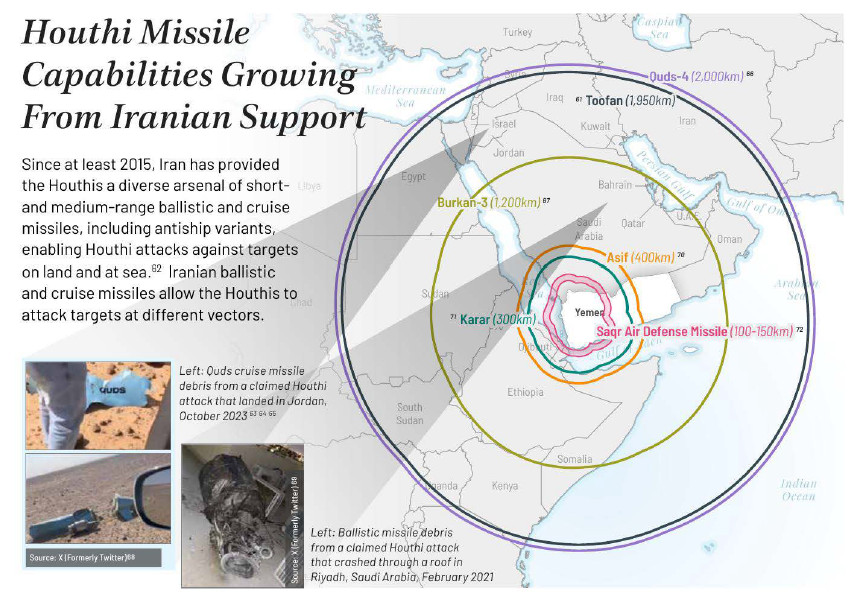The Missile Defense Agency has released a very uncommon video showing the full launch cycle of a surrogate ballistic missile from the cargo bay of a U.S. Air Force C-17A Globemaster III airlifter. The launch was part of a recent missile defense test off the coast of Hawaii, nicknamed Stellar Sisyphus.
Elements of the Missile Defense Agency (MDA), the U.S. Navy, and the Air Force supported Stellar Sisyphus, also known as Flight Test Other-23 (FTX-23). The Navy’s Arleigh Burke class destroyers USS McCampbell (DDG 85) and USS Jack H. Lucas (DDG 125), as well as the Aegis Ashore Missile Defense Test Complex and Advanced Radar Development Evaluation Laboratory, participated in the test. The Jack H. Lucas is notably the first of the Navy’s Flight III Arleigh Burkes to enter service. A major feature of the Flight III Burkes is the addition of the new AN/SPY-6(V)1 Air and Missile Defense Radar (AMDR), which you can read more about here.
The MDA video from FTX-23, seen below, starts with the launch of a mock medium-range ballistic missile (MBRM). For this test, the surrogate missile was equipped with unspecified countermeasures, according to an official release. MRBMs are categorized as any ballistic missile with a maximum range between 620 and 1,860 miles (1,000 and 3,000 kilometers).

The mock MRBM is attached to a special pallet and is pulled out of the back of the C-17 by a pair of a parachutes. Three larger parachutes then deploy and help the missile, still attached to its pallet, settles into a vertical position with its nose up. The missile then falls away from the pallet and its rocket motor ignites.



The footage also includes multiple views of the USS McCampbell firing a Standard Missile 3 Block IIA (SM-3 Block IIA) anti-missile interceptor, one of the main weapons associated with the Aegis Ballistic Missile Defense (BMD) system, as well as the actual intercept of the surrogate MRBM.

“Conducted off the coast of the Pacific Missile Range Facility, Kauai, Hawaii, the first part of this multi-sensor test successfully demonstrated that the Aegis Weapon System tracked and discriminated a complex target scene of a Medium Range Ballistic Missile target with countermeasures,” MDA explained about the overall goals of FTX-23. “The second part of this test included the firing of a Standard Missile – 3 Block IIA (SM-3 Blk IIA), which intercepted the same Medium Range Ballistic Missile target, verifying additional functionality of the SM-3 Blk IIA.”

“Together, this test demonstrated one of the most complicated target discrimination and intercept missions by the Aegis Weapon System to date,” MDA’s release added.
It is worth noting that the use of Air Force C-17s to launch larger surrogate ballistic missiles in support of MDA tests not new. However, it is unusual to see such good video footage of the entire deployment sequence.
Other footage MDA has released showing the use of C-17-launched surrogate missiles during past tests can be below.


This is also not the first time the Aegis BMD system has demonstrated its ability to knock down surrogate MBRMs and other categories of ballistic missiles, up to mock intercontinental ballistic missiles (ICBM) flying outside the Earth’s atmosphere. Aegis BMD is designed primarily to intercept ballistic missile threats in the mid-course portion of their flights.
At the same time, FTX-23 was clearly designed to put additional strain on the system and reflect new and improved ballistic missiles that could also be more difficult to spot and track to begin with due to baked-in countermeasures.
“We are working closely with the Navy to provide new and enhanced capabilities against a constantly evolving threat,” Air Force Lt. Gen. Heath Collins, the current director of MDA, said about this week’s test. “Today’s successful test was a key milestone in giving our Aegis Ballistic Missile Defense ships increased sensing and tracking tools to combat threat proliferation.”
Though Aegis BMD is more tailored to defeating higher-end ballistic threats, the FTX-23 test does come amid a moment when ballistic missiles have become a newly hot topic of discussion. This is a result of Iranian-backed Houthi militants in Yemen becoming the first to employ lower-end anti-ship ballistic missiles operationally as part of the group’s campaign in and around the Red Sea. This, in turn, put a spotlight on the growing development and fielding of ballistic missiles, including anti-ship types, especially by China, and the steady proliferation of those capabilities around the world.

Today, the Aegis BMD force includes a number of suitably configured Arleigh Burke class destroyers and a dwindling number of Ticonderoga class cruisers, as well as fixed Aegis Ashore sites in Romania and now Poland. There is also the Aegis Ashore test site in Hawaii. By the end of Fiscal Year 2024, MDA expects there to be a total of 53 Aegis BMD-configured ships in service, according to the Congressional Research Service.
However, as The War Zone recently wrote at length on this topic in the naval context of the U.S. Navy’s future Constellation class frigates:
“There is a growing need for warships to be able to defend themselves against ballistic missile attacks. An anti-air suite optimized to engage air breathing threats with no ballistic missile defense capability, no matter how capable, will only leave warships, especially those operating outside of the an Aegis Combat System umbrella, increasing vulnerable going forward. Other countries, such as the United Kingdom, are clearly seeing the same reality emerging that demand for this capability and are working to add it to existing ships. Even those with limited capabilities against low-end anti-ship ballistic missiles, like those being used by the Houthis, will be left vulnerable against higher-performing weapons fielded by near-peer state rivals.”
All of this underscores the importance of MDA improving the ability of the the Aegis BMD system, and other missile defense capabilities, to engage more and more complex threats. This, in turn, will only require more surrogate missiles to serve as targets, including ones released by C-17 cargo planes.
Contact the author: joe@twz.com
